Anthocyanins encapsulated by PLGA@PEG nanoparticles potentially improved its free radical scavenging capabilities via p38/JNK pathway against Aβ1-42-induced oxidative stress
- PMID: 28173812
- PMCID: PMC5297201
- DOI: 10.1186/s12951-016-0227-4
Anthocyanins encapsulated by PLGA@PEG nanoparticles potentially improved its free radical scavenging capabilities via p38/JNK pathway against Aβ1-42-induced oxidative stress
Abstract
Background: In order to increase the bioavailability of hydrophilic unstable drugs like anthocyanins, we employed a polymer-based nanoparticles approach due to its unique properties such as high stability, improved bioavailability and high water-soluble drug loading efficiency. Anthocyanins constitute a subfamily of flavonoids that possess anti-oxidative, anti-inflammatory and neuroprotective properties. However, anthocyanins are unstable because their phenolic hydroxyl groups are easily oxidized into quinones, causing a reduced biological activity. To overcome this drawback and improve the free radical scavenging capabilities of anthocyanins, in the current study we for the first time encapsulated the anthocyanins in biodegradable nanoparticle formulation based on poly (lactide-co-glycolide) (PLGA) and a stabilizer polyethylene glycol (PEG)-2000. The biological activity and neuroprotective effect of anthocyanin loaded nanoparticles (An-NPs) were investigated in SH-SY5Y cell lines.
Results: Morphological examination under transmission electron microscopy (TEM) showed the formation of smooth spherically shaped nanoparticles. The average particle size and zeta potential of An-NPs were in the range of 120-165 nm and -12 mV respectively, with a low polydispersity index (0.4) and displayed a biphasic release profile in vitro. Anthocyanins encapsulation in PLGA@PEG nanoparticles (NPs) did not destroy its inherent properties and exhibit more potent neuroprotective properties. An-NPs were nontoxic to SH-SY5Y cells and increased their cell viability against Aβ1-42 by its free radical scavenging characteristics and abrogated ROS generation via the p38-MAPK/JNK pathways accompanied by induction of endogenous nuclear factor erythroid 2-related factor 2 (Nrf2) and heme oxygenase 1 (HO-1). Comparative to native bulk anthocyanins, An-NPs effectively attenuated Alzheimer's markers like APP (amyloid precursor protein), BACE-1 (beta-site amyloid precursor protein cleaving enzyme 1), neuroinflammatory markers such as p-NF-kB (phospho-nuclear factor kappa B), TNF-α (tumor necrosis factor) and iNOS (inducible nitric oxide synthase) and neuroapoptotic markers including Bax, Bcl2, and Caspase-3 protein expressions accompanied by neurodegeneration against Aβ1-42 in SH-SY5Y cell lines.
Conclusions: Overall, this data not only confirmed the therapeutic potential of anthocyanins in reducing AD pathology but also offer an effective way to improve the efficiency of anthocyanins through the use of nanodrug delivery systems.
Keywords: Alzheimer’s disease; Anthocyanins; Neuroprotection; Oxidative stress; PLGA@PEG-nanoparticles.
Figures
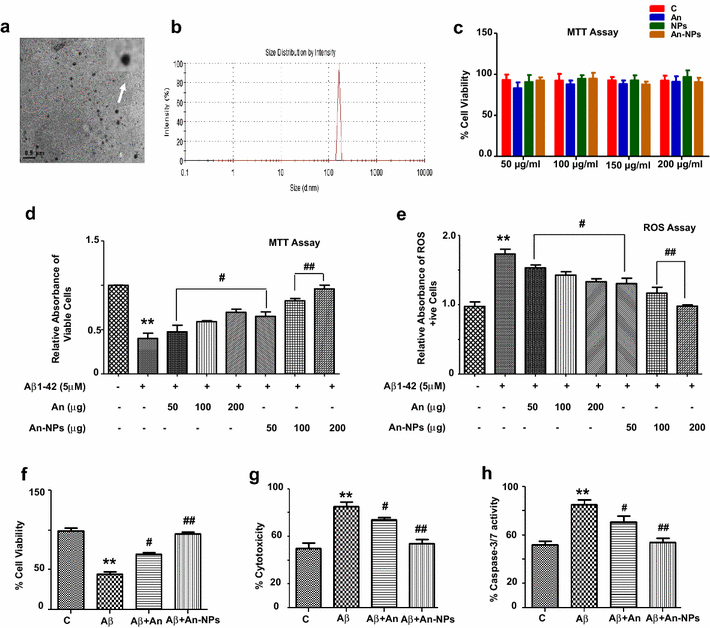
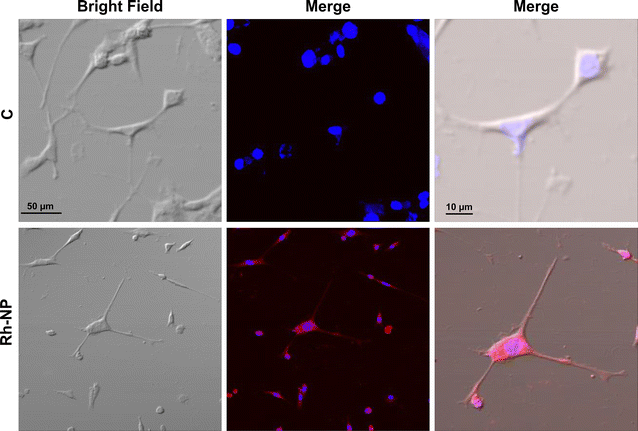
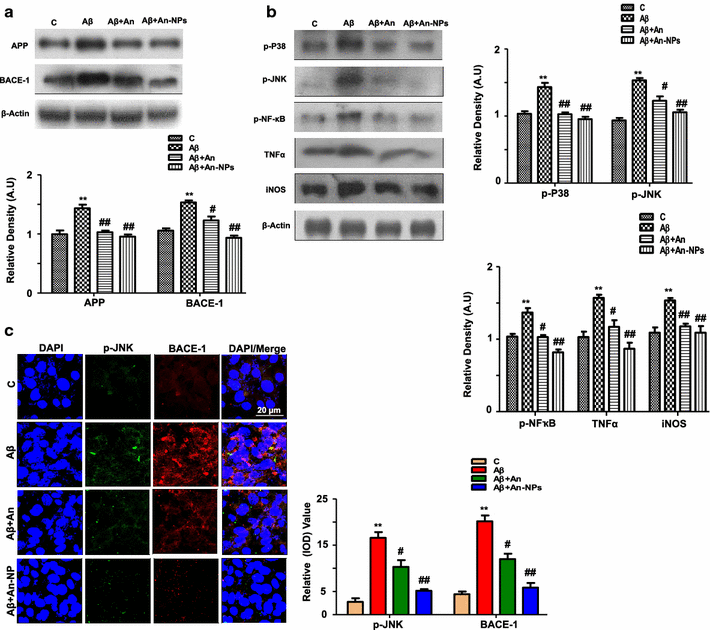
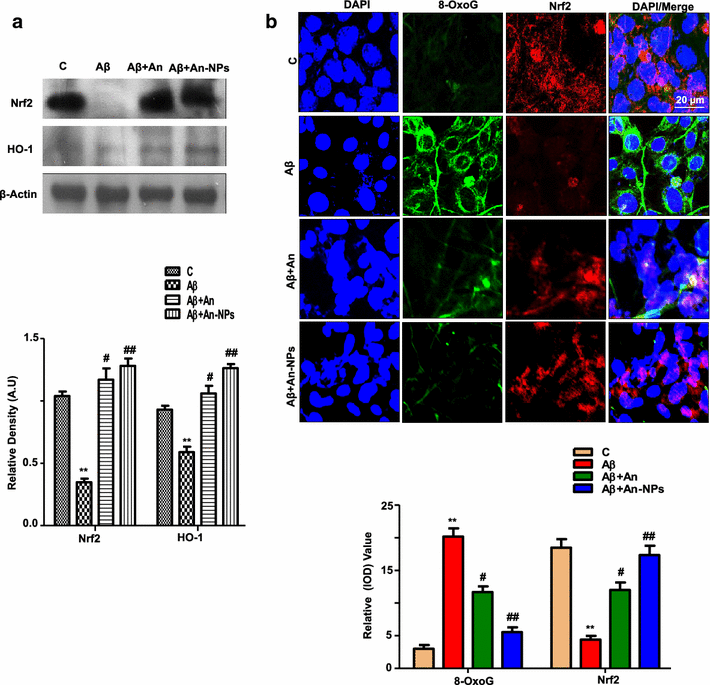
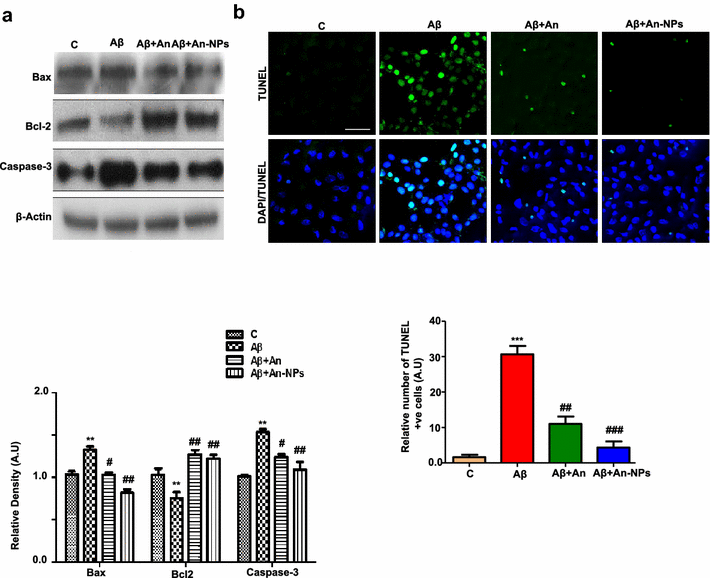
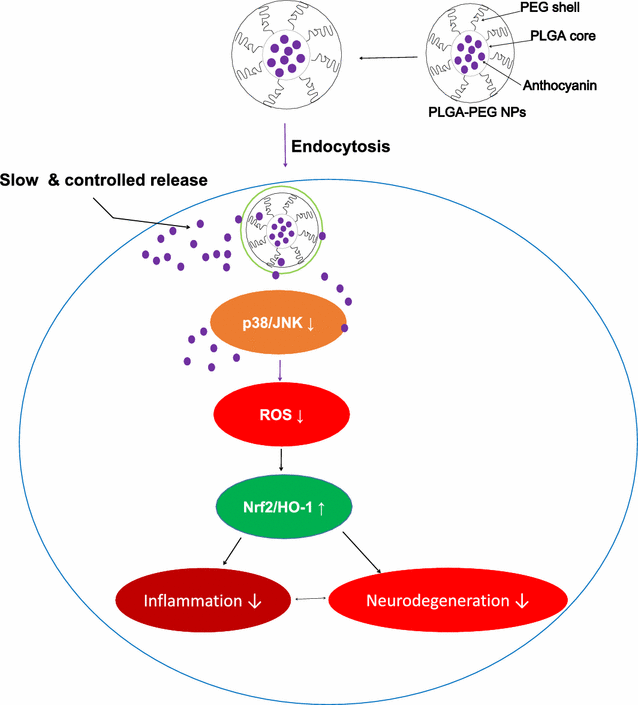
References
MeSH terms
Substances
LinkOut - more resources
Full Text Sources
Other Literature Sources
Research Materials

